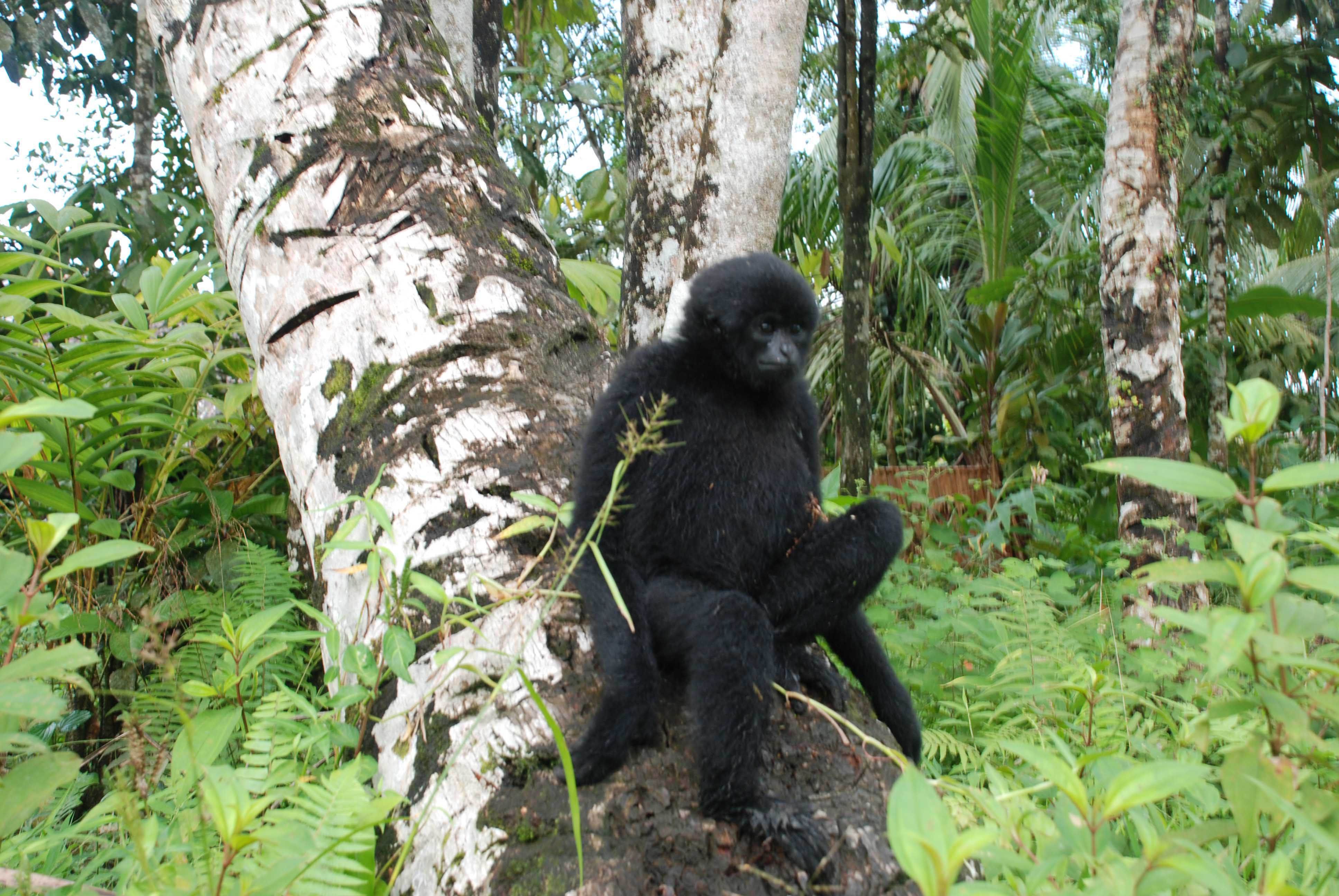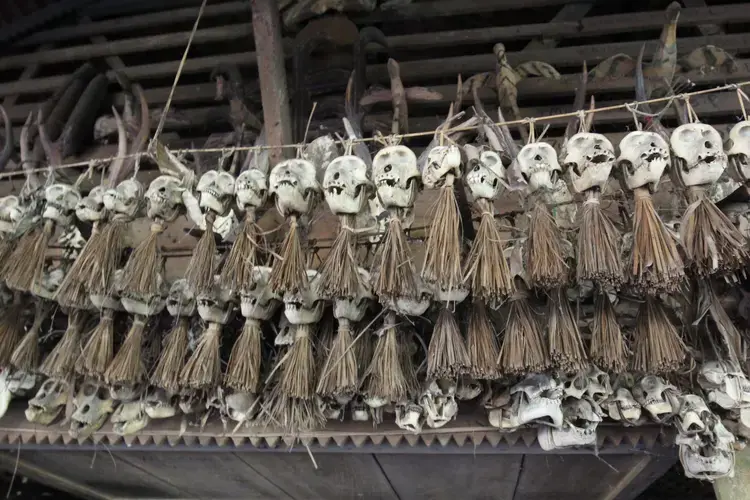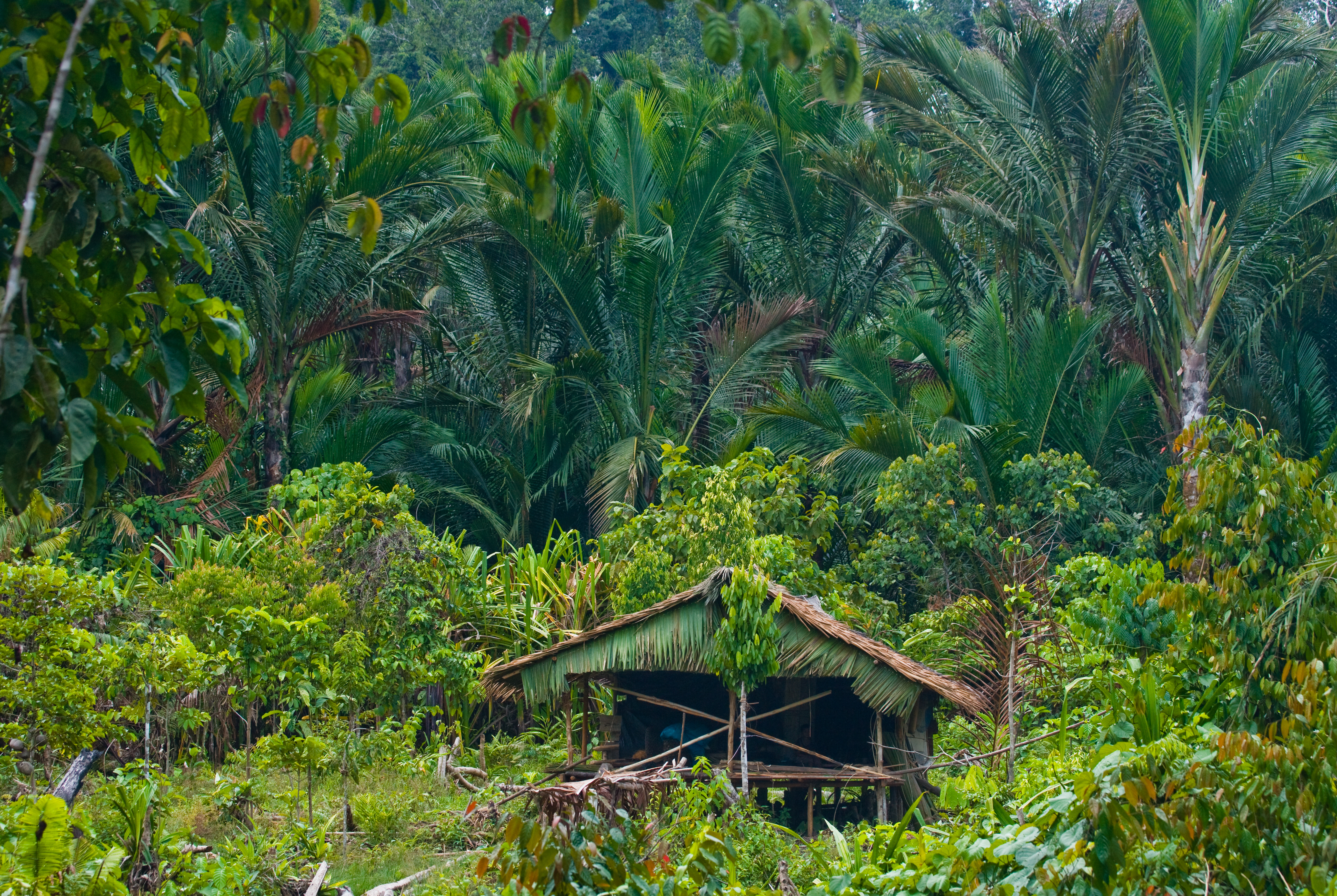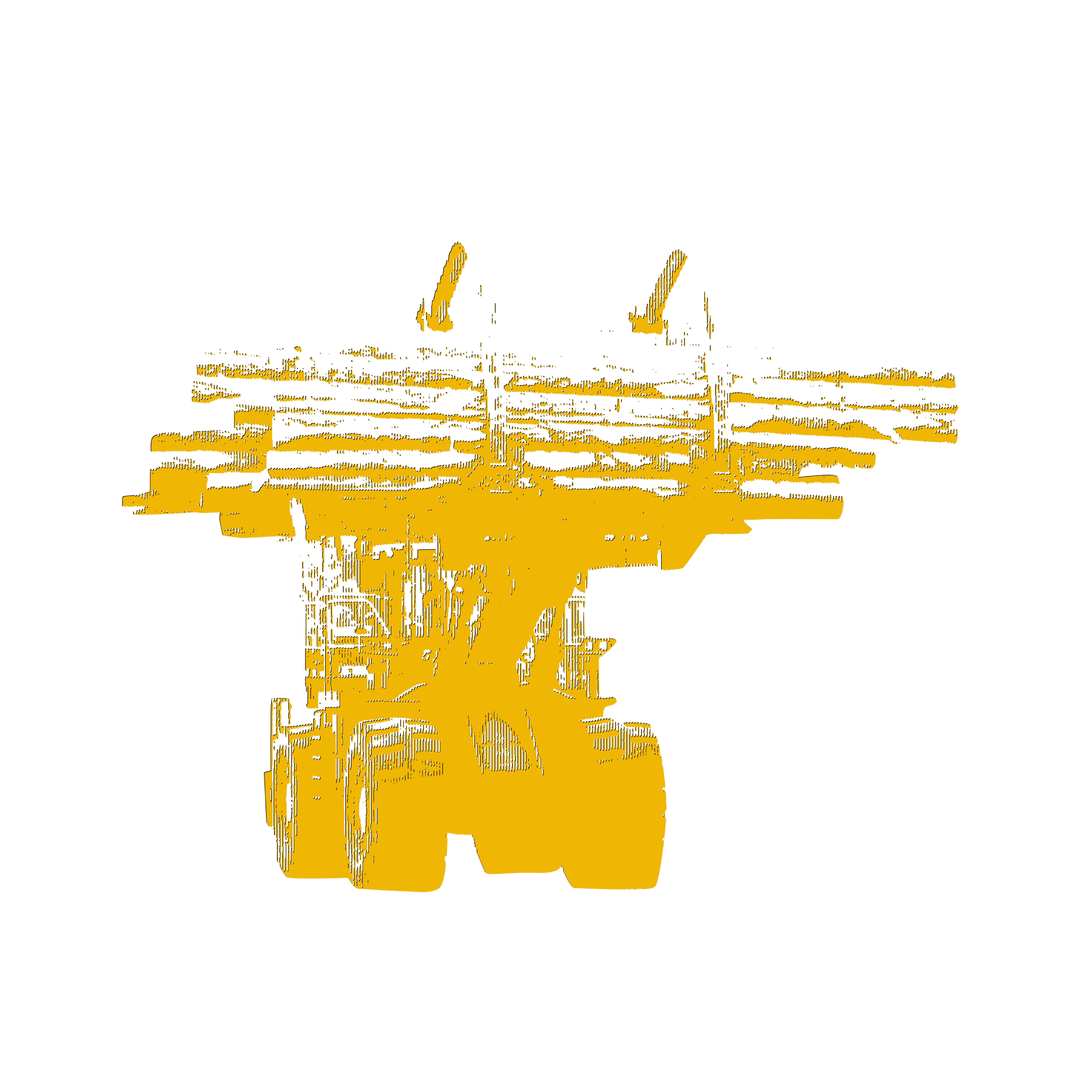
WILD rambutan was in season. Bundles of the red fruit were hanging from their trees along the banks of Bojokan River, larger in number than the green leaves. A small troop of bokoi or Siberut Macaques feasted on the rambutans that sunny afternoon just after the rains stopped, at the end of March. The five adult bokoi made quite a noise, occasionally letting out their unique whoops.
Endemic to Mentawai, the bokoi or Macaca siberu has dark-brown fur covering the body with white fur on the cheeks. Aside from the rambutan, they also snack on small shrimps that swim to the surface of Bojakan River. Their habitat is the Bekemen Forest near Bojakan Village, North Siberut Subdistrict, Siberut Island, Mentawai Islands, West Sumatra, which is situated along the edge of Siberut National Part.
Other than bokoi, Siberut National Park is shared by three other species of primate endemic to Mentawai. They are bilou (Mentawai gibbon), simakobu (Pig-tailed langur), and joja (Mentawai langur). Jojas are frequently seen hanging from trees along the Bojakan River banks. They are exquisite in appearance, with white fur on the neck and face, black shiny fur on their backs, and long black tails.
Bilou (Hylobates klossii) and simakobu (Simias concolor) mostly spend their time in the forest canopy. Both are rarely seen. When the day begins in the morning, bilou would make melodic, high-pitched whoops. Primate researchers claim that the whoop of female bilous is the most beautiful sound to ever come from a mammal. Their whoops can last between 10 to 20 minutes, with dozens of repetitions.
Bilou usually sleeps on treetops or the canopy of a large tree, such as meranti (shorea) and kruing (dipterocarpus), which towers high above ground and not encumbered by vines. They travel from one tree canopy to another, not having to descend and set foot on the forest ground.
Bokoi and joja frequently intrude into crop fields belonging to Bojakan locals who live on the border of the national park. Bokoi and joja would come during the afternoon when the farmer returns home, taking bananas, corns, and also fruits on the edge of the forest. “People have never been able to obtain rambutan because bokoi always gets to them first. Even the flower pistils are not spared because they like its bitter taste,” said Bojajan Village Chief, Sudirman.
Hordes of joja often target corns and young banana fruits as well. “Tens of them may come at a time, eating all the bananas from their trees and leaving only the stalk. When we walk past them, they just continue eating casually,” said Sudirman. “Bokoi is also mischievous, they like to crush durians. They fell the fruits using their legs just for the fun of it, not intending to eat,” he said.
Covering 190 thousand hectares or almost half of Siberut Island, the Siberut National Park is the only “safe house” left for these four species of primates endemic to Mentawai. This is because the regions outside of Siberut National Part, like most of the forest in Siberut as well and the forests in three other islands of Sipora, North Pagai, and South Pagai, have been turned into production forest area.
Siberut National Park Second Region Section Chief, Nadzrun Jamil, said that primate population is on the rise. He refers to the bilou population survey carried out in 2017 in six locations of the national park. There were 25 individuals in Bekemen, 3 in Cimpungan, 10 in Teitei Grisit, 10 in Kaleak, and 12 in Mongan Tepu. No bilou was seen in Matotonan. “Bilou population increased by 150 percent compared to the previous year,” said Nadzrun.
Nadzrun said that they have not measured the population of other three primates. Bilou was selected as the indicator due to its status as an endangered species of national priority. “Bilou lives on the tallest trees in the primary forest. We assume that, if bilou was safe, then the others must be safe as well,” said Nadzrun. Simakobu population is still unknown due to its habitat in the primary forest and rare sightings.
As for the two other primates, bokoi and joja, Nadzrun said that they are present in large numbers. They have even become pests to locals who own crop fields around the national park, such as in Bojakan., Malancan, and Sigapokna. “In Siberut, primates are the largest animals, so they have no predator. Humans used to be their predator, but now only few people go out to hunt them,” said Nadzrun.
Outside of Siberut National Park, these four primates are threatened. “When I was little, the four species of primates were abundant. But now we can only see bokoi and joja deep inside the forest,” said Fredianes, a resident of Saibi, Central Siberut. “Bilou and simakobu have not been sighted for a long time,” said Fredianes, who lives near the forest concession area (HPH) belonging to Andalas Madani Cooperative, Andalas University, which ceased operations in 2007.
One HPH company, Salaki Summa Sejahtera is currently operating in North Siberut, in an area measuring 49,440 hectares wide. They have been logging since 2007. At the end of 2018, the Environment and Forestry Ministry issued a permit for utilization of timber products in timber estates (IUPHHK-HTI) to Biomass Andalan Energi, encompassing 19,877 hectares wide in the former concession area of Andalas Madani Cooperative. This industrial forest activity has not begun yet.
Rizaldi, a Mentawai primates expert from Andalas University Biology Department, Padang, said the opening of an industrial forest in Siberut is going to wipe out the four primate species because their livelihood will be gone along with the vegetation. “When the company starts cutting down trees large and small, the primates lose their food source, their shelter, the places where they used to swing from and walk to, and food. Not one primate will live there anymore,” said Rizaldi.
The present forest concession, according to Rizaldi, has been negatively impacting the primates as well. Bilou and simakobu are the hardest-hit species because they need the tallest trees. Bilou never descends to the forest floor like the other three primates. Tree clearing hampers their movement from one tree to the other. Simakobu also lives on tall trees, eating fruits and leaves.
Unlike joja and bokoi which have more varied diets, bilou only eats fruit, particularly figs. “The dense forest, if given to HPH, would have its large trees cut down,” said Rizaldi. “If a thousand trees are felled, herbivore primates would surely escape, there would be an exodus. Then they end up becoming fragmented, and that is dangerous for the population of the primates,” said Rizaldi.
Rizaldi worries that the four primates endemic to Mentawai will be increasingly threatened. In three other islands of Sipora, North Pagai, and South Pagai, their populations have declined due to large scale forest exploitation from the concession. Rizaldi had an experience with this himself when working as a researcher in the Betumonga primate research station, North Pagai Island.
Located in a forest 623 hectares wide, the government handed the station’s management to a primate researcher from the United States, Lisa Paciulli, in the end of the 1990s. After Paciulli came back to the United States in 2002, locals sold the forest to a company which owned timber utilization permit from Mentawai Regent. The forest, an important habitat of primates in Mentawai, was destroyed almost immediately.
“The station was surrounded by tall trees such as meranti and katuka that could grow to 40 meters tall and 1 meter in diameter. When the researches returned from their holiday, they found the trees had all been cut down. The station was standing alone in the middle of an empty field,” said Rizaldi. He reminded that Mentawai Islands is the smallest region with the highest density of endemic flora and fauna in the world. “If the primates are gone, they are gone for good. We will not find them anywhere else in the world,” he said.

Hunting with Restrictions
HUNTING is a long time tradition in Siberut Island, Mentawai Islands. The front of traditional homes of Mentawai locals, uma, are often adorned with animal skulls taken as trophies from hunting. There are skulls from boars, monkeys, hornbills, and stags with large antlers.
Mentawai people hunt with bows and arrows. The bow is made of palm tree wood, while the arrows -made of nibung, a different kind of palm tree- are coated with poison to incapacitate the game. Hunters are subject to various restrictions during the production of the poison and during the hunting season. Among others, they are forbidden from having sexual intercourse with their wives, using pomade, and eating sour items. If this taboo is violated, misfortunes may happen, such as the hunter being injured by the poisoned, deadly arrows.
The types of monkey permitted for hunting are also restricted to only bokoi, joja, and simakobu. Bilou is strictly off-limits. Due to these restrictions, less and less people in Siberut Island have taken up hunting primates in the forest. One village still committed to hunting primates is the Simatalu Village, West Siberut, in the Siberut National Park area.
A Simatalu resident, 29-year old Aris Sailo, said that many traditional rituals are concluded with hunting primates. For example, if a family member has an accident in the forest while looking for manau (rattan), then a pengekelan ritual must be done to ward off evil spirits so that they would not disturb the tribe. The ritual culminates with hunting monkeys to signify completion of its ceremony.
Siberut National Park 2nd Region Section Chief, Nadzrun Jamil, said that the locals have had no run-in with the law in the national park regarding their primate hunting activities. “They hunt only for tradition, and to obtain food as needed,” said Nadzrun. “Primate hunting has declined drastically because now there are only few people who are skilled in archery,” he said. “If somebody keeps a captured animal as pet, we would immediately take it for recovery and release back into the wild.”
Mentawai Nusantara Indigenous People Alliance (AMAN) Chairperson Rapot Pardomuan said that hunting in Siberut is mostly done in a traditional way after meeting prerequisites for its ritual. Hunting activities must be carried out by adhering to certain restrictions as well. “Before hunting, the sikebukan uma (tribe chief) would commence a ritual to ask for permission to the spirits. This ritual also impose a limit on hunting, so that it is not done in a large scale every day,” said Rapot.
Hunting for animals other than primates also begins with a ritual and subject to restrictions. Sea turtle hunting, as commonly done by locals along the eastern coast of Siberut Island, comes with its own set of strict restrictions. Gerson Merari Saleleubaja, a resident of Mailepet, South Siberut, said that sea turtle hunting is called upon to conclude large party events in the uma, such as when inaugurating a new uma, opening a new field, or finishing a new sampan (boat).
Restrictions before and during the sea turtle hunt include, among others, having sexual intercourse, taking a shower, and directly mentioning the name of an item, which must be substituted with an object pronoun. “The belief is that violating these restrictions will bring diseases which end up in death,” said Gerson, who is also the editor of Mentawaikita.com, a local online news portal in Mentawai Islands.
Aside from Mentawai, traditional hunting of protected animals is also done in other places in Indonesia. For example, the sperm whale (Physeter microcephalus) hunting by residents of Lamalera, Lembata Island, East Nusa Tenggara. Referred to by locals as koteklema, a sperm whale could feed a whole village for a month.
Coastal and marine conservation expert from Bung Hatta University, Padang, Harfiandri Damanhuri said that changing the hunting culture of traditional people requires a lengthy process and a long time. “People of Mentawai hunt sea turtles because these animals are plenty there. In Lamalera, people hunt whales because they are such a big meal. They have the tradition of hunting in seasons, sharing the game meat, and engaging in celebrations, these are parts of the cycle of their culture,” he said.
Harfiandri, who is also a sea turtle researcher, said that in order to change a hunting culture, then non-protected animals must be provided as an alternative game option. If not that, “Perhaps the solution is stretching the hunting season, such as once every four years to help save population. Also, a continuous socialization about the prohibition of hunting protected animals,” he said.







